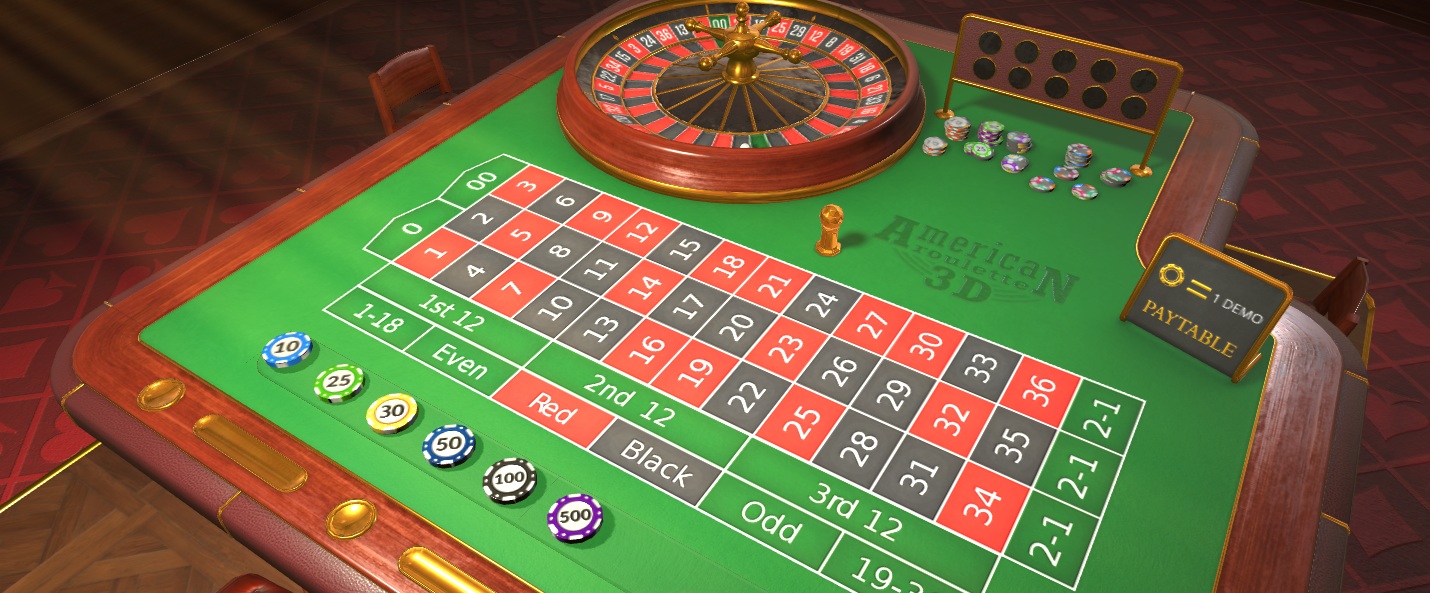The number of slots on a roulette wheel varies between European and American roulette. European roulette wheels feature 37 pockets, numbered 0 through 36. American roulette, on the other hand, has 38 pockets with the additional 00 slot. This extra slot on American wheels creates a higher house edge, making European roulette the more favorable option for players. Knowing the differences in wheel construction and their impact on gameplay is just the beginning – there’s more to explore when it comes to the intricacies of roulette wheel mechanics and strategies.
European and American Roulette Wheels
What’re the key differences between European and American roulette wheels?
European roulette wheels feature 37 numbered pockets, ranging from 0 to 36, while American roulette wheels have 38 pockets, including an additional green 00 slot.
This extra 00 pocket on American wheels increases the house edge to around 5.26%, compared to the 2.7% edge in European roulette.
Both wheel types have red and black numbered pockets, but the American version offers more betting options due to the extra slot.
The design and layout of these roulette wheels are essential factors in shaping the overall gameplay experience for players.
The Logic Behind Roulette Wheel Numbers
The arrangement of numbers on the roulette wheel isn’t random – it follows a specific sequence that varies between European and American versions.
This sequence can influence potential betting strategies, as certain number combinations may appear more or less frequently.
Additionally, the presence of the 0 and 00 slots creates a house edge, which affects the overall betting outcomes for players.
Wheel Number Sequences
The sequence of numbers on a single-zero European roulette wheel follows a specific logic that may surprise many players. The arrangement of the 37 numbered slots is designed to create an unpredictable outcome, making it more challenging for players to rely on patterns.
| American Roulette | European Roulette |
|---|---|
| 38 numbered slots | 37 numbered slots |
| 0, 00, 1-36 | 0, 1-36 |
| Unique number sequence | Specific number sequence |
| More betting options | Fewer betting options |
| Higher house edge | Lower house edge |
Understanding the numerical layout on the roulette wheel can aid players in developing betting strategies, although the randomness of each spin ultimately governs the game’s outcomes.
House Edge Implications
Understanding the implications of the house edge is crucial when playing roulette. The house edge in American roulette is around 5.26% due to the 38 slots, while in European roulette, it’s lower at 2.7% with 37 slots.
This difference affects the likelihood of outcomes and your expected value per bet. The presence of the 0 and 00 in American roulette increases the number of losing outcomes, diminishing your expected value.
Considering the house edge can help you make more informed decisions about your betting strategies and potential outcomes when playing on the roulette wheel.
Roulette Wheel Construction and Reliability
While a standard American roulette wheel features 38 slots and a European wheel has 37, the construction of these wheels requires precise engineering to confirm fairness. The uniformity of pocket size and spacing is critical, as is the use of non-magnetic components to maintain balance and prevent biases. High-quality roulette wheels undergo rigorous testing and regular maintenance to ascertain reliability and integrity, minimizing the impact of mechanical imperfections. To further mitigate long-term betting advantages, casinos often rotate their roulette wheels, ensuring the gameplay remains unpredictable.
| Material | Purpose |
|---|---|
| Non-magnetic Components | Maintain Balance |
| Precision Engineering | Confirm Uniformity |
| Rigorous Testing | Ascertain Reliability |
| Regular Maintenance | Preserve Integrity |
Roulette Wheel Deceleration and Ball Behavior
The ball’s tangent trajectory and the wheel’s angular deceleration factors play an essential role in determining the randomness of roulette results.
As the ball slows down, its trajectory and interactions with the wheel’s pockets become increasingly complex, making the landing outcome less predictable.
Understanding these factors can provide valuable insights into the game’s mechanics and the unpredictability of the roulette wheel.
Ball Tangent Trajectories
As the roulette wheel spins, the ball’s trajectory is governed by a series of tangential motions. The angle at which the ball descends into the wheel can determine which pocket it may land in.
This interaction between the ball and the pockets on the wheel can cause the ball to bounce, making the final landing position less predictable. However, understanding these tangential motions can provide players with insights into potential winning numbers, even though the game remains fundamentally random due to its design.
The ball’s trajectory is influenced by various factors, including its initial velocity, the angle of release, and the friction between the ball and the wheel surface.
Angular Deceleration Factors
Although the roulette wheel’s design, materials, and surface play an essential role, the ball’s initial velocity and the friction between the ball and the wheel greatly impact how quickly the ball decelerates.
The average roulette wheel may decelerate at a rate of 100-200 revolutions per minute per second, depending on the conditions. This angular deceleration considerably affects the ball’s behavior, determining how it lands and the winning numbers it settles on.
Understanding these factors, including the interaction between the ball and the wheel’s pockets, can help players recognize patterns, even though the game ultimately remains influenced by chance.
Betting Strategies and Roulette Wheel Exploits
When it comes to Betting Strategies and Roulette Wheel Exploits, you’ll find a fascinating array of betting systems and potential wheel exploits.
In the American-style roulette game, the 38-slot wheel offers a higher house edge of 5.26%, making it essential to understand the statistical risks.
While betting strategies like Martingale or Fibonacci don’t change the odds, they can lead to significant losses if not managed properly.
Exploiting wheel imperfections, as demonstrated by William Jaggers, can yield substantial profits, emphasizing the importance of comprehending wheel mechanics and biases.
Ultimately, the probability of being ahead after 100,000 plays drops dramatically, highlighting the long-term disadvantage players face against the casino’s profit margin when placing bets on even numbers, odd or even, and other gambling dens offerings.
Notable Roulette Wheel-Related Winnings
Roulette wheels have enabled some players to amass impressive winnings over the years.
For instance, in 2016, a lucky gambler at the Bellagio in Las Vegas won a staggering $2.6 million on a single $100 straight-up bet on the number 8 in American roulette.
Another player at the Casino de Monte-Carlo won €1.3 million by betting on a single number, showcasing the potential for significant payouts in European roulette.
In 2017, a gambler won £1.5 million at the Grosvenor Casino in the UK by placing a bet on red and hitting a streak of wins.
The highest recorded roulette payout occurred in 2018 when a player at the Ritz Club in London won £1.3 million on a single-number bet.
Conclusion
You’ll be on the edge of your seat as you spin the roulette wheel and watch the ball bounce around the numbers. With 37 slots on a European wheel and 38 on an American one, the possibilities are endless. But don’t get too comfortable – the wheel’s deceleration and the ball’s behavior can throw a wrench in even the savviest player’s strategy. The thrill of the game is half the fun, so let the chips fall where they may!




